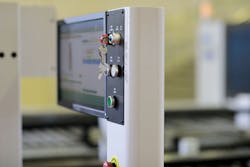HMI hardware: what option works best?
The human-machine interface (HMI) market is robust, valued at $5.02 billion, with projections to reach $7.34 billion by 2029. With a variety of HMI hardware options, including panel and pedestal mount HMIs, desktop workstations and mobile devices, machine builders and controls engineers must carefully consider factors such as environmental conditions, functionality, display requirements and communication interfaces when selecting the best device for their applications.
Control Design partner publication Automation World highlighted the critical role of HMI hardware in industrial automation applications in a recent article. The publication spoke to a variety of experts, who emphasized the importance of assessing the operational environment, durability, protection ratings and the need for explosion-proof hardware in hazardous conditions.
The experts also suggested that integrating functions into HMIs can reduce panel size and streamline control, while also noting the significance of physical buttons for safety and emergency stops. HMIs provide intuitive controls and visual representations, which simplify complex tasks and accelerate operator training.
Experts suggest that HMIs should be strategically located to minimize travel and optimize input methods. The integration of HMI hardware with manufacturing systems is facilitated by standard communication protocols like Modbus and EtherNet/IP, allowing real-time data acquisition and interaction with PLCs and SCADA systems.

